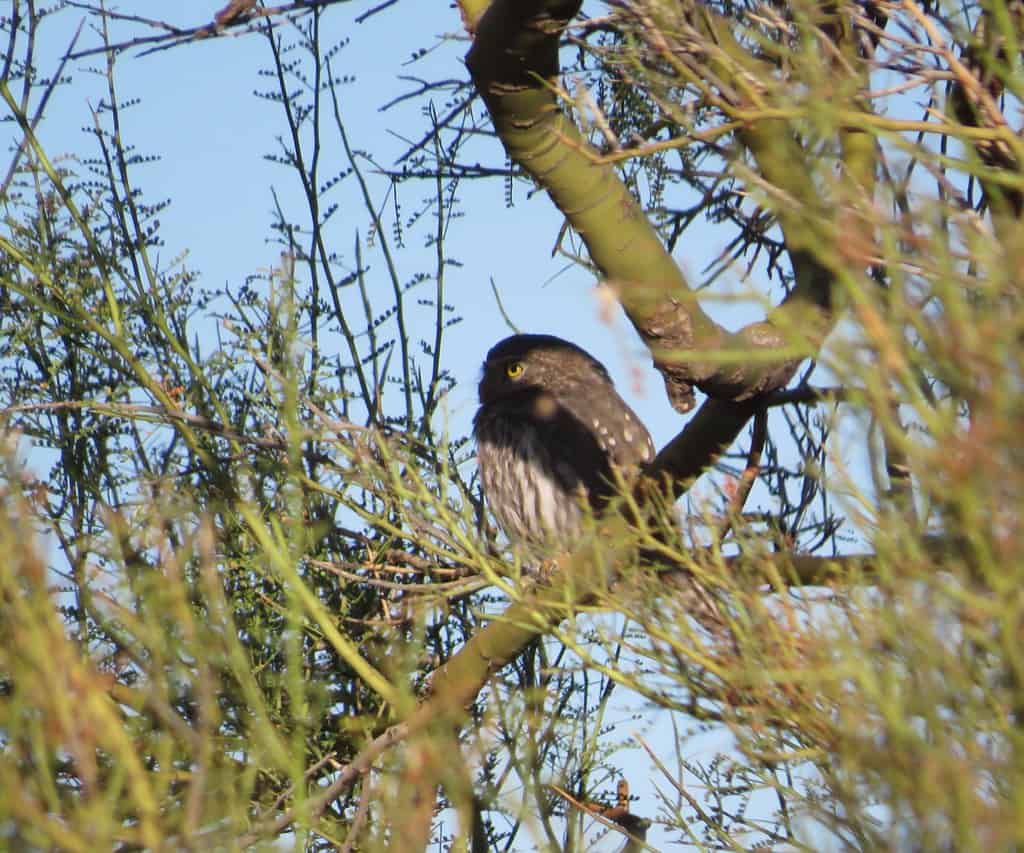Wildfires and soaring temperatures are profound influencers on natural ecosystems, particularly for the fauna that depend on them. In Arizona, known for its unique deserts and ecological diversity, these environmental pressures are keenly felt. One group facing intense challenges are the state’s iconic bird species, which are integral to Arizona’s natural heritage. This article presents a comprehensive exploration of how wildfires and extreme heat are impacting these birds, shedding light on the intricate and often precarious balance within these vibrant ecosystems.
Understanding Arizona’s Bird Diversity

Arizona boasts an exceptional diversity of bird species, with more than 550 recorded. This vast array represents birds dwelling in habitats from the high-altitude pine forests to the sun-soaked deserts, each adapting uniquely to their specific environments. The region’s iconic birds, including the distinctively colorful Vermilion Flycatcher or the musical Canyon Wren, draw birdwatchers from around the globe.
The Role of Climate in Bird Habitats

Birds in Arizona have evolved to thrive in climates ranging from the arid Sonoran Desert to the cooler climes of its mountainous regions. However, these habitats are precariously balanced and susceptible to shifts in climate patterns. Any drastic changes in temperature and precipitation can upset these carefully maintained ecosystems.
Impact of Wildfires on Habitats

The increasing prevalence of wildfires in Arizona presents a threatening new reality. Unlike historically beneficial, smaller fires that clear underbrush and rejuvenate the soil, today’s megafires decimate vast areas indiscriminately. These fires destroy critical nesting sites and food sources, challenging bird populations to survive and multiply.
The Relationship Between Heat and Bird Physiology

High temperatures pose a physiological threat to birds, impacting their general health and survival. Birds face thermal stress when temperatures exceed their thermal tolerance, leading to dehydration, heat exhaustion, or even death. Prolonged exposure to high temperatures can also reduce reproductive success, affecting long-term population viability.
Case Study: The Cactus Ferruginous Pygmy-Owl

The Cactus Ferruginous Pygmy-Owl exemplifies the challenges faced by Arizona’s birds. With nests often built in saguaro cacti, they are vulnerable to both rising temperatures and wildfire damage. These environmental stresses have led to significant declines in their numbers, highlighting their precarious status.
The Role of Migratory Patterns

Many of Arizona’s birds are migratory, moving to cooler, more temperate regions during peak summer months. However, increasingly erratic climate patterns complicate these migrations. Unpredictable storms, sudden temperature changes, and altered flowering or seeding times of plants they rely on disrupt these critical journeys.
Conservation Efforts and Strategies

Conservationists are employing a variety of strategies to counter these threats. Habitat restoration, constructing safe corridors for migratory birds, and educational initiatives about fire management are among the measures being adopted. These efforts aim to mitigate the impacts, ensuring a safer environment for avian species to flourish.
Community Role in Bird Conservation

Community involvement is crucial in supporting these birds. Citizen science, such as participating in bird counts and habitat maintenance, contributes valuable data to researchers. By fostering local engagement, communities can aid in the preservation of bird habitats and advocate for policy changes that champion sustainable environmental practices.
Predicting Future Patterns

Climate models suggest that without intervention, Arizona will continue to see an increase in both annual temperatures and fire occurrences. These predictions highlight the urgent need for comprehensive action plans that prioritize ecological balance and resilience against extreme climatic events.
The Importance of Birds to Ecosystems

Birds are pivotal to maintaining ecological balance. They act as seed dispersers, pollinators, and pest control agents. Their decline can trigger a cascade of adverse effects throughout ecosystems, underscoring the necessity of preserving their wellbeing as integral parts of our natural world.
Adaptability of Bird Species

Despite these challenges, some species show remarkable adaptability. Urban hawks and certain sparrow species have increasingly been spotted, adapting to city life. These instances prove that while adaptation is possible, it is not uniform across species and cannot wholly counteract extreme environmental stressors.
Summation and Hope for the Future

The plight of Arizona’s bird species amidst escalating wildfires and temperatures is a microcosm of greater global environmental struggles. It reinforces the urgency for informed, collective action to address climate change and habitat destruction. Through ongoing conservation efforts and heightened awareness, there remains hope for preserving these avian marvels for future generations to cherish and admire.
- 13 Creatures That Outsmart Their Predators - June 30, 2025
- The Real Species That Inspired Disney’s Animal Sidekicks - June 30, 2025
- Narwhals Use Their Tusks to Stun Fish - June 30, 2025

